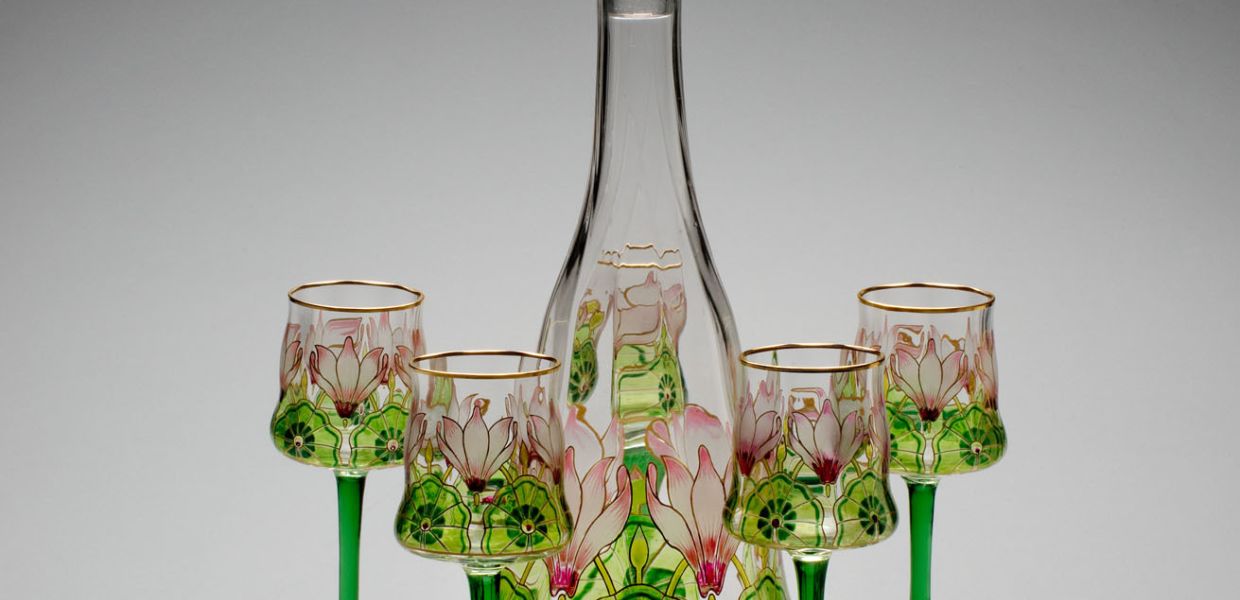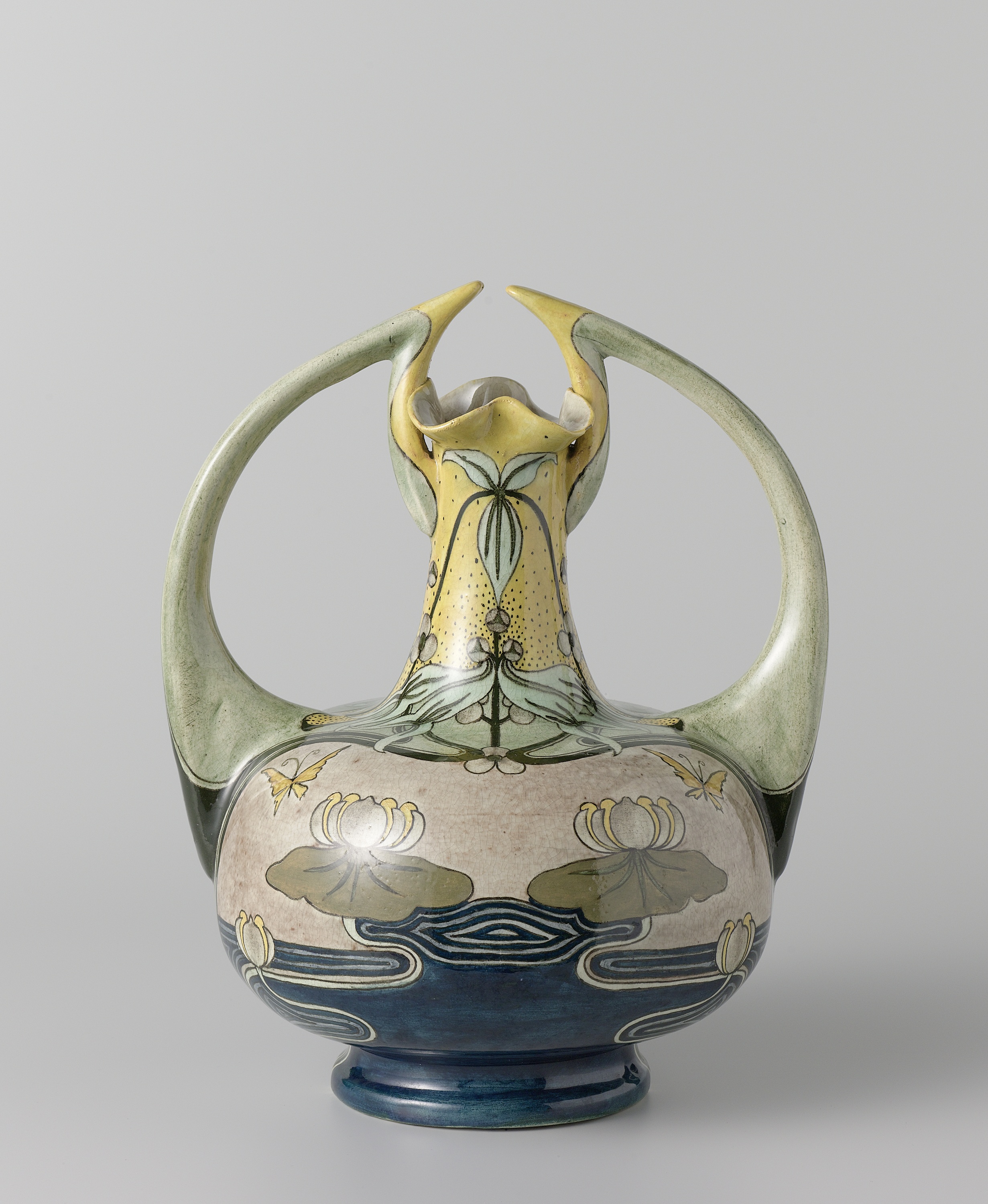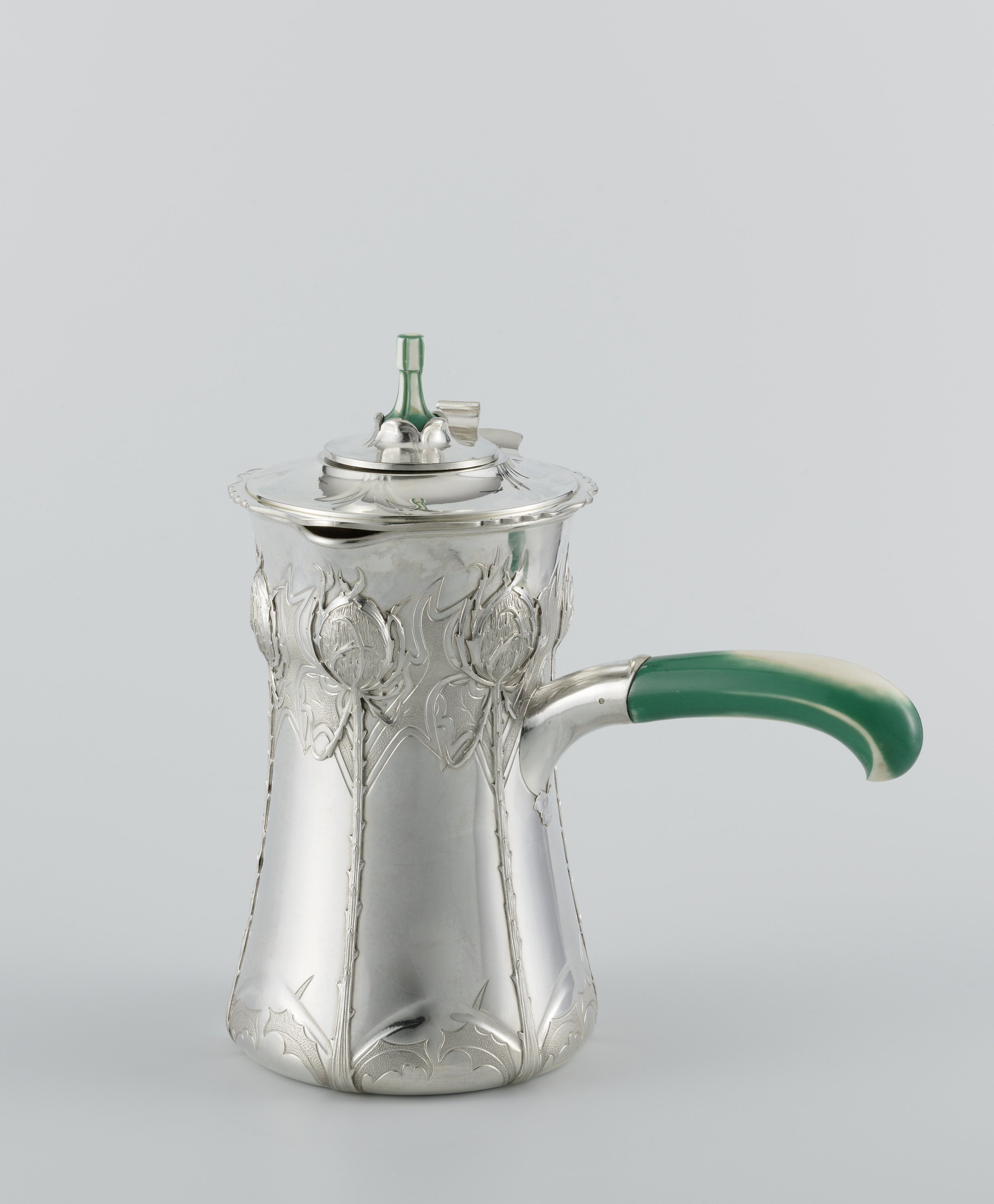#MakewithEuropeana: Art Nouveau mastercrafts

This is the last in a series of blogs dedicated to Art Nouveau and highlighting Europeana content to inspire commercial creative reuse by makers.
Excellent craftsmanship and innovation marked the mastercrafts produced during the Art Nouveau era. These two traits are of vital importance to any professional, but could be especially meaningful to makers - a community that brings together both amateur and professional arts, crafts and technological practitioners - who wish to transform digital cultural heritage into new designs, products or business during the information age.
In this blog post, we will highlight elements of ceramics, glassware and metalworks produced by Art Nouveau practitioners. If you would like to find out more about mastercrafts from this popular style, take a look at our Art Nouveau exhibition.
Ceramics
Art Nouveau ceramicists experimented with new forms and innovative glazing techniques. Malleable clay was the perfect medium for realising the characteristic forms of the Art Nouveau aesthetic. The item displayed below - a vase with arrowhead, water lilies and butterflies - is a fine example of Art Nouveau ceramics. Find other beautiful ceramics items in our dedicated Pinterest board.

Vaas met pijlkruid, waterlelies en vlinders. Brantjes en Co., Firma Wed. N.S.A. 1895-1904. Rijksmuseum. Public Domain.
Glassware
Glassmakers returned their work to the furnace many times, adding layers of textures and decorative elements. Historical techniques were revived and new ones invented, creating radiant colours and iridescence. Take the drinking set below, for instance. This beverage kit used the painting technique to portray a typical motif of the time: flowers. See more highlights of Art Nouveau glassware in our dedicated Pinterest board.

Nápojová souprava. 1900. Uměleckoprůmyslové Museum V Praze. CC0
Emile Gallé (1846-1904), a French glassmaker, ceramicist, and furniture designer, became one of the most influential figures within Art Nouveau and the French decorative arts. Take a look at the vase below. Like this vase, you can see that this fantastic piece depicts a lathraea, a type of flowering plant. We’ve collected more glassware by Gallé in a dedicated Pinterest board.

Stangenvase mit Schuppenwurz und einem Vers von Victor Hugo. Émile Gallé. 1899. Museum Für Kunst Und Gewerbe Hamburg. CC0
Metalworks
The use of metal decoration in plant forms soon also appeared in silverware, lamps, and other decorative items (see the chocolate pot with a molinet, a stirrer used to make the cocoa frothy, below).The firm of Ernest Cardeilhac produced the pot and it was known for developing a more accessible form of Art Nouveau silver. The company’s designs are characterized by a combination of nature motifs in a repetitive pattern, in this case stylized thistles. Find other metalworks highlights in our Pinterest board.

Chocolate pot with a molinet. Ernest Cardeilhac. 1900. Rijksmuseum. Public Domain.
Show us what you #MakeWithEuropeana
We will feature the best examples of makers using Europeana’s Art Nouveau content on Europeana Labs. Share your creation with us! Email us or tweet to us using @EuropeanaLabs and the hashtags #MakeWithEuropeana and #EuropeanaInspires. Stay up to date with future opportunities by signing up to the Europeana Labs newsletter.
